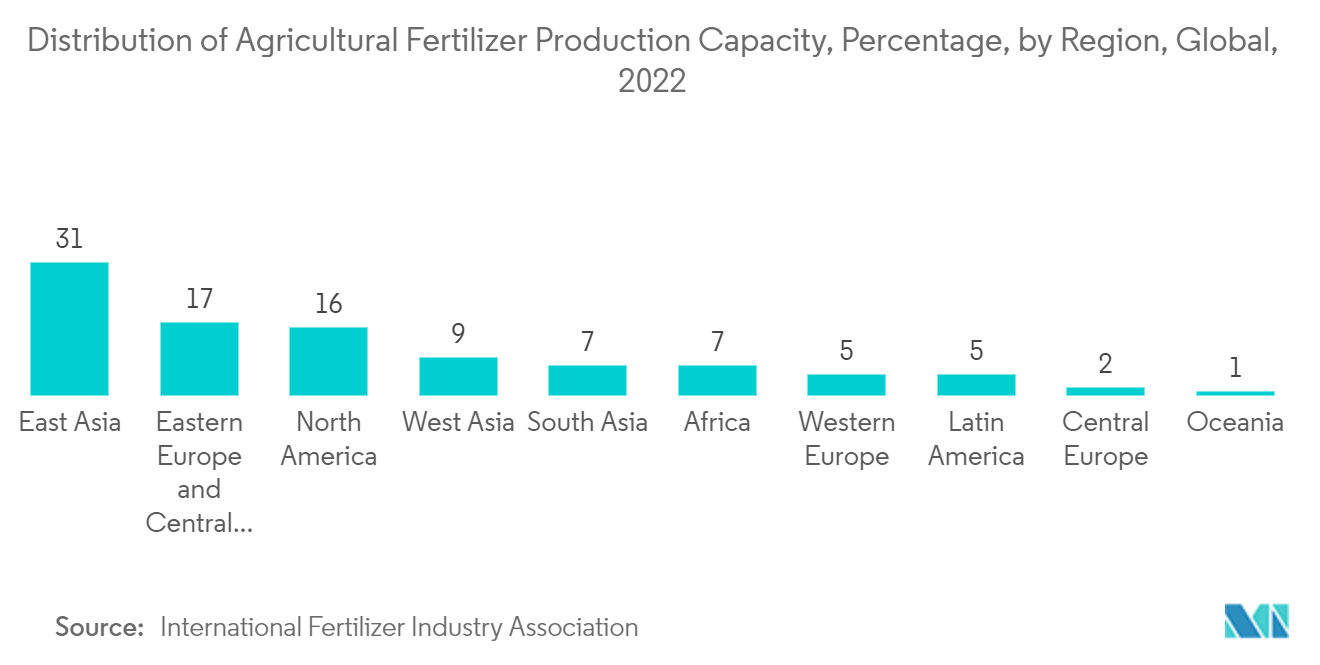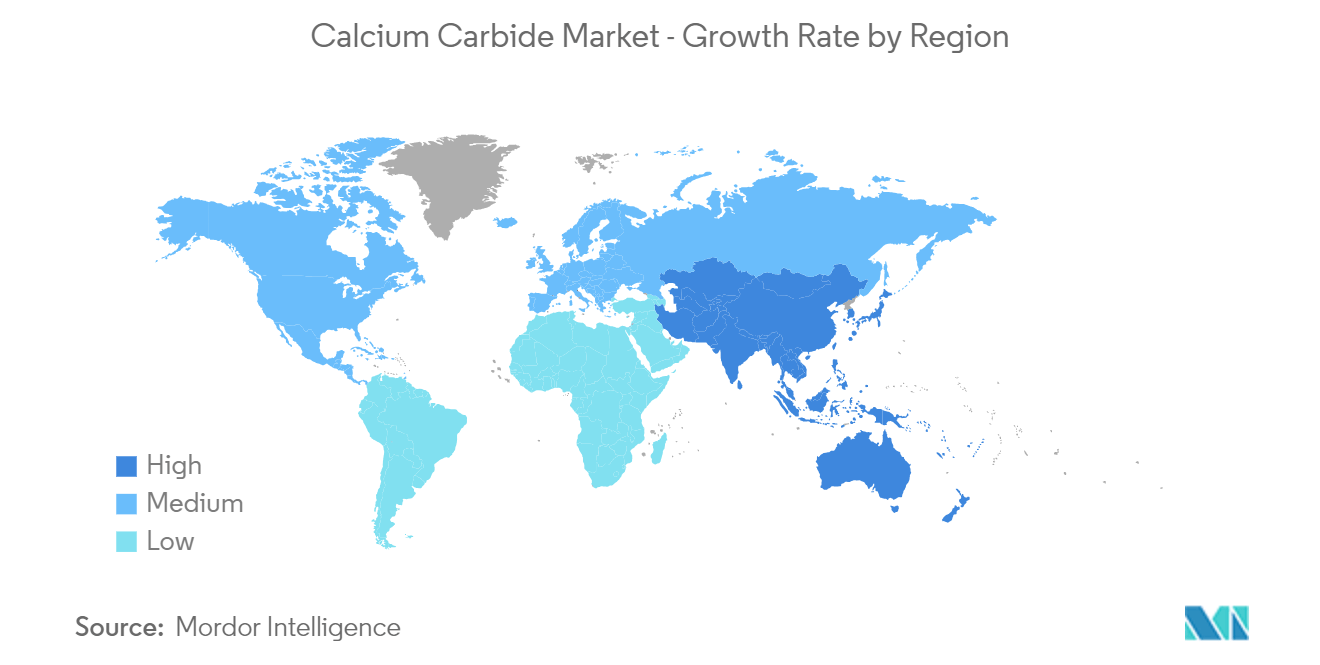Market Trends of Calcium Carbide Industry
Chemical Industry to Dominate the Market
- Calcium carbide is one of the primary building blocks in synthetic organic and industrial chemistry. It is one of the major sources of acetylene, which is extensively used in the chemical industry. Acetylene is an extremely useful hydrocarbon due to the energy that is locked up in its triple bond.
- One of the most common applications of acetylene is its use as a raw material for manufacturing vinyl chloride, acetic acid, and acrylonitrile. Vinyl chloride is used in the formulation of various fibers, films, cables, sheets, etc., and it has numerous applications in the construction and automotive sectors.
- The co-product of acetylene production is calcium hydroxide, which has several uses. It is most widely used in the process of scrubbing stack gases from fossil fuel-based power plants to remove sulfur compounds before they are released into the air. Chemical manufacturers use calcium hydroxide to neutralize their waste streams, while municipalities use it to treat sewage water.
- According to a report published by BASF 2023, global chemical production is expected to increase to 2.7% in 2024 from 2.2% in 2023, thus increasing year-on-year.
- In the United States, chemical production increased by 2.3% in 2022. However, the underlying impact of weather-related production losses in 2021 played a major role. Meanwhile, production in South America grew at 2.6% in 2022, slightly slower than the previous year (+3.6%).
- Similarly, in Europe, the French chemical industry is the second-largest in total sales of chemicals and chemical products after Germany. France ranks sixth among all countries in terms of R&D investments in the chemical industry, spending around USD 2.1 billion annually.
- In South America, the Brazilian Chemical Industry Association, Abiquim, introduced a set of short-, medium-, and long-term proposals for the chemical industry, which may help reduce cost, increase competitiveness, improve regulatory aspects, and increase investment. This proposal aims to increase the share of the chemical sector in the country’s GDP to USD 231.2 billion by 2030.
- Calcium carbide is also majorly used in the production of calcium cyanamide, which is used as a fertilizer. As per the International Fertilizer Industry Association, in 2022, East Asia recorded the highest fertilizer production capacity worldwide, accounting for more than 31% of production. Eastern Europe and Central Asia followed, with a share of 17%.
- Moreover, according to the Middle East News Agency (MENA), citing a statement by the Egyptian Fertilizer Export Council, Egypt's chemical fertilizer exports were expected to increase by 23% from USD 7.33 billion in 2021 to USD 8.62 billion in 2022. The chemical sector accounted for 24% of Egypt's total non-oil exports.
- So, these factors and trends can affect the growth of the global calcium carbide market over the next few years.

Asia-Pacific is Expected to Dominate the Market
- Asia-Pacific accounts for around 94% of the global demand for calcium carbide. China is the world's largest producer and consumer of calcium carbide, with increased demand from end-user industries such as chemicals, metallurgy, and food.
- Moreover, because of its large reserves and growing demand for VCM (vinyl chloride monomer), VAM (vinyl acetate monomer), and BDO (butanediol) from acetylene, the consumption of calcium carbide is increasing.
- China records the largest consumption of coal. Not only has it been used for power generation, but the Chinese have been using coal for chemical production for a long time. Since the late 19th century, coal tar has been used to synthesize aromatics and special chemical compounds, primarily for the dye industry.
- Lately, the country has been using calcium carbide to convert coal to acetylene. This has led to the increased production of acrylonitrile (ACN), vinyl chloride monomer (VCM), 1,4-butanediol (BDO), and acrylic acid (AA). China has around ten planned additions to acrylonitrile capacity, with a total capacity of about 2.23 million tonnes per annum (Mtpa) by 2026.
- Additionally, China is by far the largest steel producer globally. In 2023, the county produced 1,019.1 million tons of crude steel. The second largest, India, had a production of a mere 140.2 Mt. Moreover, in September 2023, Chinese steel company Ulanhot Steel launched a new blast furnace at a plant in Inner Mongolia (an autonomous region in Northern China). The blast furnace capacity of 1.2 thousand cubic meters is estimated at 1.13 million tons of iron per year. The increasing steel production is expected to increase the demand for acetylene gas for flame-cutting and cleansing purposes. Additionally, calcium carbide is used in the production of low-carbon steel. Calcium carbide plays a vital role in the steel industry. It is primarily utilized in the desulfurization process during steel production.
- Moreover, Japan is the second largest consumer of calcium carbide in the region. The Japanese chemical industry is dominated by a few prominent companies, which are usually highly diversified and often form alliances with other companies. According to the German Chemical Industry Association, VCI, in 2022, the sales value of the chemical industry in Japan amounted to approximately EUR 227.26 billion (USD 246.63 billion). Following China, the Japanese chemical industry had the second-largest sales value in Asia.
- The reaction of calcium carbide (CaC2) with water (H2O) is used to produce acetylene. The production volume of dissolved acetylene in the chemical industry in Japan decreased to 8.11 thousand tons in 2022. The production volume has declined since 2014, when it amounted to 10.92 thousand tons. This marked the lowest production quantity in this industry during the observed period. Notably, this industry's production quantity decreased over the last few years.
- ASEAN countries are also witnessing an increased consumption of calcium carbide. Vietnam and Indonesia were the 12th and 15th largest crude steel producers globally, with a production capacity of 19 million tonnes and 16 million tonnes.
- As per the World Steel Association report, Indonesia produced around 16 million tons of crude steel in 2023, compared to 15.6 million tons in 2022, registering a growth of 2.8%. The positive growth of the steel industry in Indonesia was due to control efforts carried out by the government in the country, with the concept of smart supply demand, which was executed by prioritizing the national steel industry from the upstream sector to the downstream sector.
- Therefore, the aforementioned factors are expected to have a significant impact on the market in the coming years.


